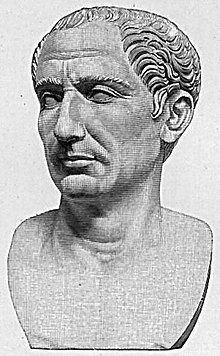Caesar cipher

In cryptography, a Caesar cipher is an ancient form of substitution cipher. It is named in the honor of Roman emperor, Julius Caesar[1]
Method[change | change source]
To encrypt a message with a Caesar cipher, each letter in the message is changed using a simple rule: shift by three. Each letter is replaced by the letter three letters later in the alphabet. A becomes D, B becomes E, and so on. For the last letters, we can think of the alphabet as a circle and "wrap around". W becomes Z, X becomes A, Y becomes B, and Z becomes C. To change a message back, each letter is replaced by the one three before it.
Weakness[change | change source]
However it is very easy to break a Caesar cipher, even if you change the "key number" to a different number.[2] Using a more modern form of encryption would be better.

Changing by three is the rule that the well known Julius Caesar used, but the same idea works for any number. ROT13 can be seen as a modern version of the Caesar cipher, with the same weaknesses.
The Caesar cipher is a substitution cipher: each letter is replaced by another. No substitution cipher is safe for sensitive information.
References[change | change source]
- ↑ "Learn Cryptography - Caesar Cipher". learncryptography.com. Retrieved 2019-10-06.
- ↑ Eisele, Robert. "Cracking a Caesar cipher". raw.org. Retrieved 2024-03-24.
